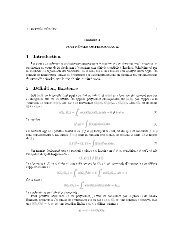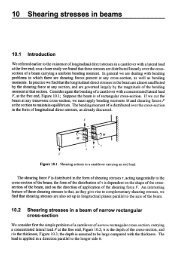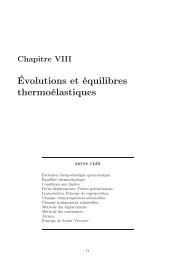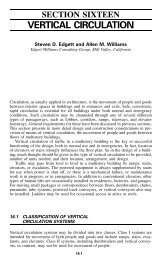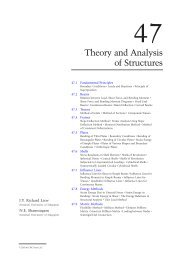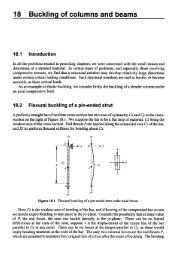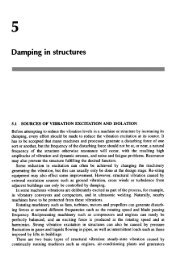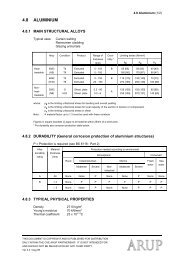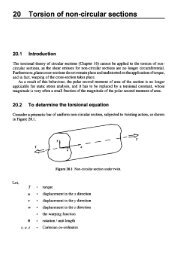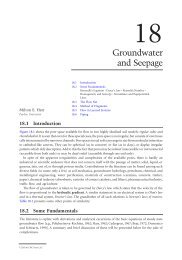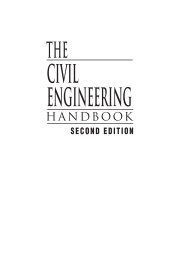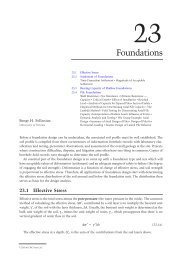Chapter 32 - Deep Foundations - Index of - Free
Chapter 32 - Deep Foundations - Index of - Free
Chapter 32 - Deep Foundations - Index of - Free
- No tags were found...
Create successful ePaper yourself
Turn your PDF publications into a flip-book with our unique Google optimized e-Paper software.
⎧ L′ 20 – 2L′L 0 ′ + 0.5L′ 2⎪⎛--------------------------------------------------⎞⎝ L′ + H + 1.5B ( 9cu B)⎪⎠P u = ⎨0.5BL 3⎪K p γ′----------------------------⎪ H + L⎩for cohesive soilfor cohesionless soil(<strong>32</strong>.28)whereL = embedded length <strong>of</strong> pileH = distance <strong>of</strong> resultant lateral force above ground surfaceB = pile diameterL′ = embedded pile length measured from a depth <strong>of</strong> 15 . B below the ground surface, orL′ = L−15. BL 0= depth to center <strong>of</strong> rotation, and L0 = ( H+ 23L)/( 2H+L)L 0′ = depth to center <strong>of</strong> rotation measured from a depth <strong>of</strong> 15 . B below the ground surface, orL′ = L − . B0 015Ultimate Lateral Capacity for the Fixed-Head ConditionThe ultimate lateral capacityfollowing formula:P u<strong>of</strong> a pile under the fixed-head condition is calculated by using the9c u BL ( – 1.5B)⎧P u = ⎨⎩ 1.5γ′BL2 K pfor cohesive soilfor cohesionless soil(<strong>32</strong>.29)<strong>32</strong>.5.3 Lateral Capacity and Deflection — p–y MethodOne <strong>of</strong> the most commonly used methods for analyzing laterally loaded piles is the p–y method,in which soil reactions to the lateral deflections <strong>of</strong> a pile are treated as localized nonlinear springsbased on the Winkler’s assumption. The pile is modeled as an elastic beam that is supported on adeformable subgrade.The p–y method is versatile and can be used to solve problems including different soil types,layered soils, nonlinear soil behavior; different pile materials, cross sections; and different pile headconnection conditions.Analytical Model and Basic EquationAn analytical model for pile under lateral loading with p–y curves is shown on Figure <strong>32</strong>.9. Thebasic equation for the beam-on-a-deformable-subgrade problem can be expressed asEI dy 4P dy 2−x+ p+ q=4dx dx20(<strong>32</strong>.30)wherey = lateral deflection at point x along the pileEI = bending stiffness or flexural rigidity <strong>of</strong> the pileP x= axial force in beam columnp = soil reaction per unit length, and p=−E sy; where E sis the secant modulus <strong>of</strong> soil reaction.q = lateral distributed loadsThe following relationships are also used in developing boundary conditions:© 2000 by CRC Press LLC



